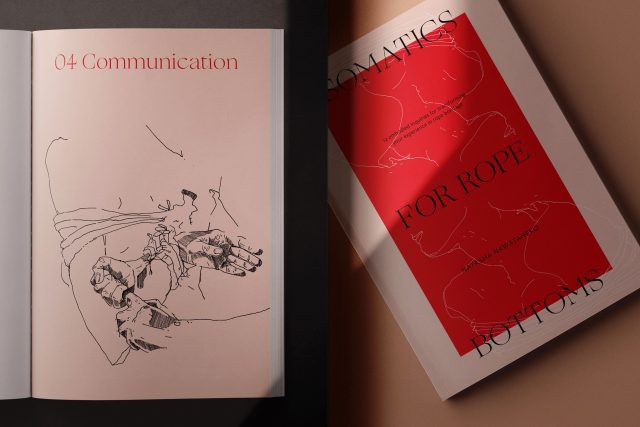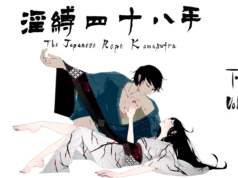Author: Natasha Nawataneko
Reviewed By: DojoGuy
Available from Amazon, Price: $29.00 (Paperback), $9.99 Kindle.
Natasha NawaTaNeko has authored a beautiful book which takes a unique, holistic approach to self-education for rope bottoms. With a foreword by Red Sabbath, this small volume contains 12 questions intended to guide rope bottoms through an exploration of their feelings and desires. Something less than a map, but more than bare questions, this book offers a serious and well reasoned approach to topics every rope bottom is sure to encounter.
At just over 140 pages, the book’s profile is slim but the contents are heavy. While it may come across as a book for experienced rope bottoms, even a very new person to rope has a lot to gain from reading this. The questions it explores range from intention, to pain, to emotions. Nothing is approached with a directive (“you must”) mindset, but rather a questioning approach meant to develop one’s personality as a rope bottom. The author has a clear intention to foster the development of individuals, versus setting behavioral rules.
Some examples from the table of contents illustrate the somatic questions that are posed:
Chapter 1 Intention: Why do we seek the experience of being tied?
Chapter 9 Safety: What makes us feel safe in rope bondage?
Chapter 12 Risk Profile: Which risks can we take and where to stop exploring?
Most notable about this book is the somatic approach it takes. The author’s academic training in sexological bodywork is reflected in the thoughtful, yet easy to grasp writing style. This is not a book that espouses a particular approach, such as semenawa. Rather, it approaches every tying session as an opportunity to better understand oneself- why did you come here, what are you after, and how do you feel about what is happening?
Perhaps the author’s own words best explain this-
“Bondage with ropes, what people put at stake is our body, our emotions, our psyche and our soul. Everything that is within our being is known as “soma.” We allow ourselves to be affected on many levels, exposed to playing with our emotions, enduring physical discomfort and open to mental challenges.”
As a guidebook, the author closes each section with questions meant to help you the reader reflect on the topic and explore it deeper. Whether it’s asking what you give when being tied, or what happens when you trust someone to tie you, these questions offer the opportunity to truly change your experience of bondage. The book which is built around them should be a primer for anyone interested in their own sexual psychology in rope.
Many modern books about shibari offer an excellent insight into the practical approach of doing the tying. Fewer books offer insights into how a bottom should receive the ties, how they can process the pain experienced, and build a practice of being a rope bottom. This book stands out because it’s one of the few that focuses solely on the idea of helping us understand why we want to be tied and how exactly we long to be treated by our partner(s). I highly recommend it to anyone interested in exploring those motivations.
Released in 2020, the book comes in softcover only, but is printed on good stock and I look forward to enjoying it in my library for years to come. There are some line art illustrations, as visible on the Amazon.de webpage, but mostly it is text. Finally, I feel compelled as reviewer to share that aside from both myself and the author being residents in Berlin, I do not know nor have I met the author; the book was recommended to me by an acquaintance.







